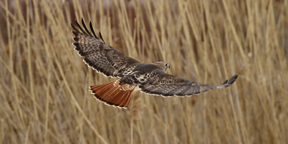
Changing things up a little to accomodate this photo!
This column appeared in the Recorder on Jan 8, the
Gazette on Jan 10 and the Eagle on Jan 13.
Well folks, this El Nino thing turns out to be no joke. Winter officially started on December 22 and I’ve only seen a few stray flakes here and there. Furthermore, any mention of snow in the weather forecast barely grabs my attention because a couple inches of snow won’t even make much of a difference. The warm weather following any such event will cause the snow to melt off quickly and there really isn’t much need to even contemplate firing up the snow blower.
The lack of snow has been a source of the purest devastation for my mother. If she had her way we would have all arrived at her house for Christmas and then woken up on Christmas Day to find that four feet of fresh snow had fallen during the night. We would have been “snowed in” for Christmas and any thought of leaving would be interpreted as complete nonsense. My father and I always share a knowing glance when this topic comes up because we and we alone would be responsible for clearing the snow.
So, we didn’t have a White Christmas and the forecast doesn’t suggest that we are in for much snow in the next two weeks. This may be a relatively snow-free winter and while some of us may find that to be disappointing, there are certainly some of our wild neighbors that find this to be a welcome development. I was thinking about this sort of thing as I spent the last week of December driving hither and thither to one holiday gathering after another. It really struck home when I noticed Red-tailed Hawks (Buteo jamaicensis) sitting in the trees by the sides of the various roads that I was using.
The Red-tailed Hawk is the prototype for the group of diurnal raptors known as “Buteos.” These are the large, soaring hawks that we sometimes see gliding in lazy circles on a warm summer day and in our area there are three species that fit into this mold. There is the Red-tailed Hawk, the Broad-winged Hawk (Buteo platypterus) and the Red-shouldered Hawk (Buteo lineatus). Notice that all of these birds fall into the same genus (Buteo), which denotes their close relationships.
At this time of year a large, soaring hawk perched in a tree by the side of the road is almost certainly a Red-tailed Hawk. The Broad-wings have all migrated to South America and we find ourselves at the extreme northern limit of the winter range of Red-shouldered Hawks. So this means that Red-tailed Hawks are the ones that stay with us throughout the winter and this means that snowy winters can put a lot of pressure on these birds.
Red-tailed hawks may go after prey items as large as squirrels, but most of their “easy” prey will come in the form of mice and voles. The birds may spend hours hunting for just one morsel of food and as the temperature drops, their need for food will increase. I am certain that one of my readers has seen a Red-tailed Hawk standing in the grassy middle margin of a major highway in the past week and this draws our attention to some of the dangers that these beautiful birds face. Humans maintain ideal hunting habitat for hawks along the sides of major highways, so hawks are commonly seen perched in trees along these same roads. Pouncing on a mouse is relatively easy, but dodging between cars and trucks can be very dangerous and hawks are often hit and killed.
At this time of year a Red-tailed Hawk that is sitting in a tree is probably minding its own business, but starting in February you may start to notice hawks that are sitting in trees that are relatively close to one another. These hawks are likely to be members of a mated pair and although they are not sitting on the same branch of the same tree, they are experiencing togetherness. It turns out that Red-tailed Hawks will form bonded pairs that remain faithful to one another for years. As long as the members of such a pair can survive the winter, they will reunite in the spring and work as a team to raise yet another brood of youngsters.
For Red-tailed Hawks a winter without any snow must certainly be a huge win. Mice and voles are active throughout the winter and they must be out and about in their search for food. This makes them vulnerable to the ever-watchful presence of Red-tailed Hawks, but in years with snow the small mammals are the beneficiaries of a great deal of protection. The mice can move about under the snow with no problems at all, but the hawks have tremendous difficulty finding them. Deep snow means lean times for hawks.
So, the next time you drive out to Rt. 90, or Rt. 91, keep your eyes peeled for the large shapes of Red-tailed Hawks that are perched in the trees at the edge of the road. In some areas you may find that the “city hawks” are also willing to perch on light posts right above the roads. As long as there is no snow on the ground, the strips of grass next to roads will be attractive hunting grounds for hungry hawks and this will provide us all with a chance to see these beautiful wild neighbors of ours.